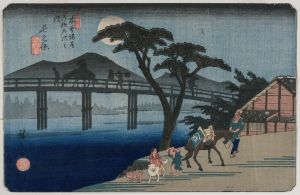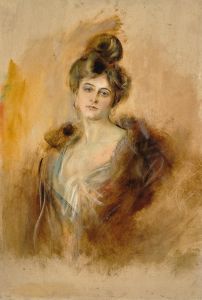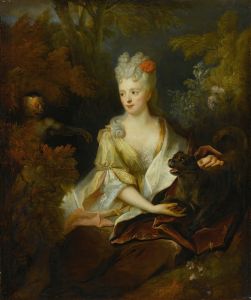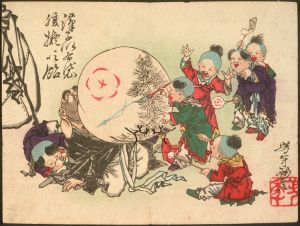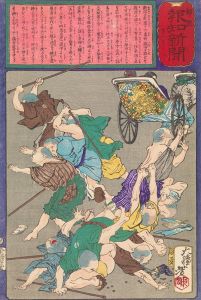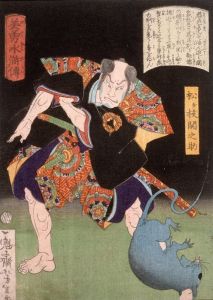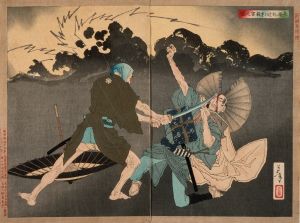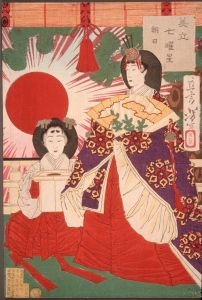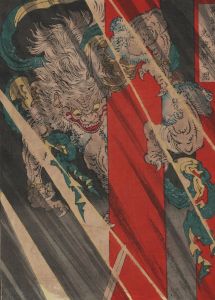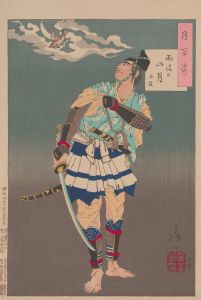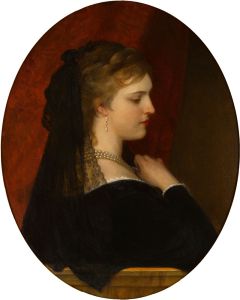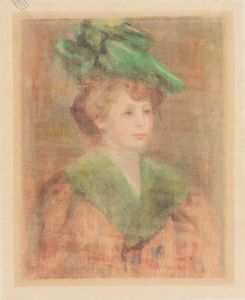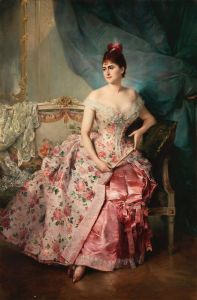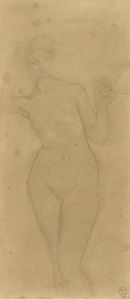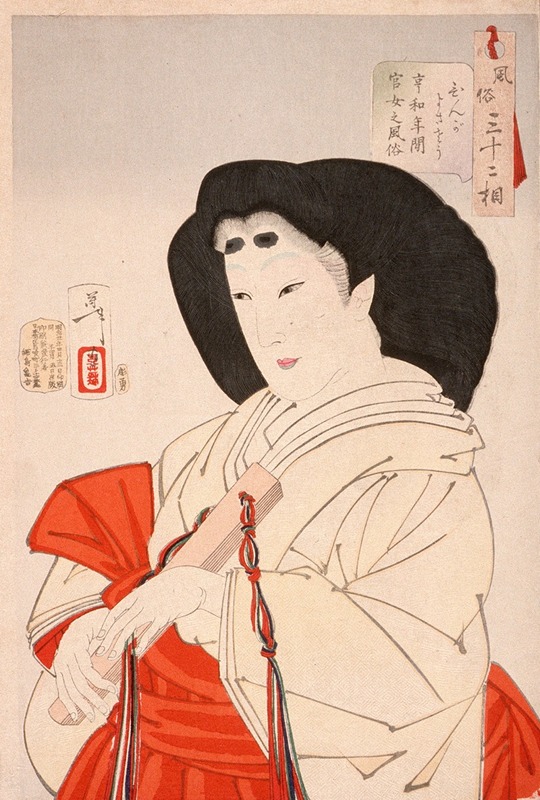
Elegant; A Lady of the Imperial Court in the Kyōwa Period
A hand-painted replica of Tsukioka Yoshitoshi’s masterpiece Elegant; A Lady of the Imperial Court in the Kyōwa Period, meticulously crafted by professional artists to capture the true essence of the original. Each piece is created with museum-quality canvas and rare mineral pigments, carefully painted by experienced artists with delicate brushstrokes and rich, layered colors to perfectly recreate the texture of the original artwork. Unlike machine-printed reproductions, this hand-painted version brings the painting to life, infused with the artist’s emotions and skill in every stroke. Whether for personal collection or home decoration, it instantly elevates the artistic atmosphere of any space.
Tsukioka Yoshitoshi (1839–1892) was a renowned Japanese artist known for his work in ukiyo-e, a genre of woodblock prints and paintings that flourished in Japan from the 17th through the 19th centuries. Yoshitoshi is often celebrated for his innovative approach to traditional subjects and his ability to capture the complexities of human emotion and historical narratives.
One of Yoshitoshi's notable works is "Elegant; A Lady of the Imperial Court in the Kyōwa Period." This piece is part of his series "Thirty-Two Aspects of Customs and Manners" (Fūzoku Sanjūnisō), which was published in 1888. The series is a collection of woodblock prints that depict women from various periods of Japanese history, showcasing different fashions, customs, and social roles.
"Elegant; A Lady of the Imperial Court in the Kyōwa Period" specifically portrays a woman from the Kyōwa era, which spanned from 1801 to 1804 during the Edo period. The Kyōwa period was a time of relative peace and cultural prosperity in Japan, and the imperial court was a center of refined culture and artistic expression. Yoshitoshi's depiction of a court lady from this time reflects the elegance and sophistication associated with the imperial court.
In this print, Yoshitoshi employs his characteristic style, combining delicate lines with vibrant colors to bring the subject to life. The lady is depicted in traditional court attire, which would have been elaborate and richly decorated, reflecting her high status and the aesthetic values of the time. Her pose and expression convey a sense of grace and poise, qualities that were highly esteemed in courtly women.
Yoshitoshi's work is notable for its attention to detail and historical accuracy, as well as its ability to convey the cultural and social nuances of the periods he depicted. In "Elegant; A Lady of the Imperial Court in the Kyōwa Period," he captures not only the physical appearance of the court lady but also the essence of her role and status within the imperial court.
The "Thirty-Two Aspects of Customs and Manners" series, including this print, is considered one of Yoshitoshi's masterpieces. It showcases his skill in portraying the beauty and diversity of Japanese women throughout history, as well as his deep understanding of the cultural and historical contexts of his subjects. This series marked a significant achievement in Yoshitoshi's career and contributed to his lasting legacy as one of the last great masters of ukiyo-e.
Yoshitoshi's work, including "Elegant; A Lady of the Imperial Court in the Kyōwa Period," continues to be celebrated for its artistic merit and historical significance. His prints offer a window into the past, allowing contemporary audiences to appreciate the rich cultural heritage of Japan and the enduring beauty of ukiyo-e art.





